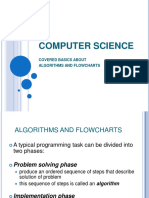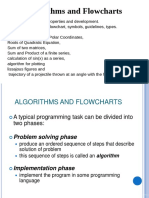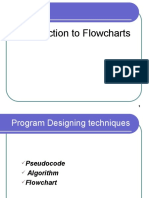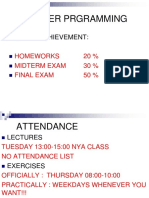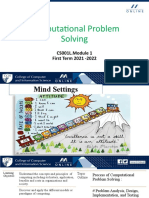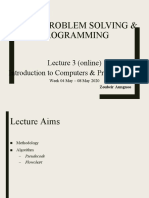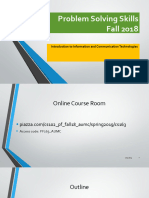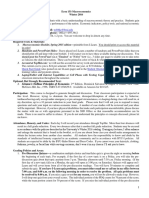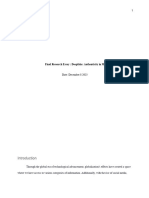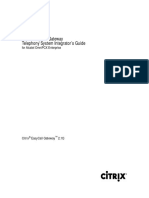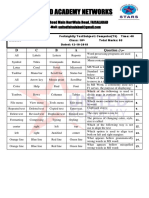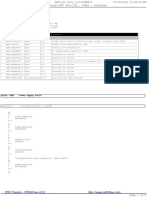0% found this document useful (0 votes)
53 views47 pagesPF Lec1 Introduction
Here is the algorithm:
Step 1: Input VALUE1, VALUE2
Step 2: If VALUE1 > VALUE2 then
MAX = VALUE1
Print "VALUE1 is the largest number."
Else
MAX = VALUE2
Print "VALUE2 is the largest number."
EndIf
This algorithm takes in two values, compares them using the > relational operator, and assigns the largest value to the variable MAX. It then prints a message identifying which of the original values was largest.
Uploaded by
Åñäs Prïñçē MäqbóòlCopyright
© © All Rights Reserved
We take content rights seriously. If you suspect this is your content, claim it here.
Available Formats
Download as PDF, TXT or read online on Scribd
0% found this document useful (0 votes)
53 views47 pagesPF Lec1 Introduction
Here is the algorithm:
Step 1: Input VALUE1, VALUE2
Step 2: If VALUE1 > VALUE2 then
MAX = VALUE1
Print "VALUE1 is the largest number."
Else
MAX = VALUE2
Print "VALUE2 is the largest number."
EndIf
This algorithm takes in two values, compares them using the > relational operator, and assigns the largest value to the variable MAX. It then prints a message identifying which of the original values was largest.
Uploaded by
Åñäs Prïñçē MäqbóòlCopyright
© © All Rights Reserved
We take content rights seriously. If you suspect this is your content, claim it here.
Available Formats
Download as PDF, TXT or read online on Scribd
/ 47


